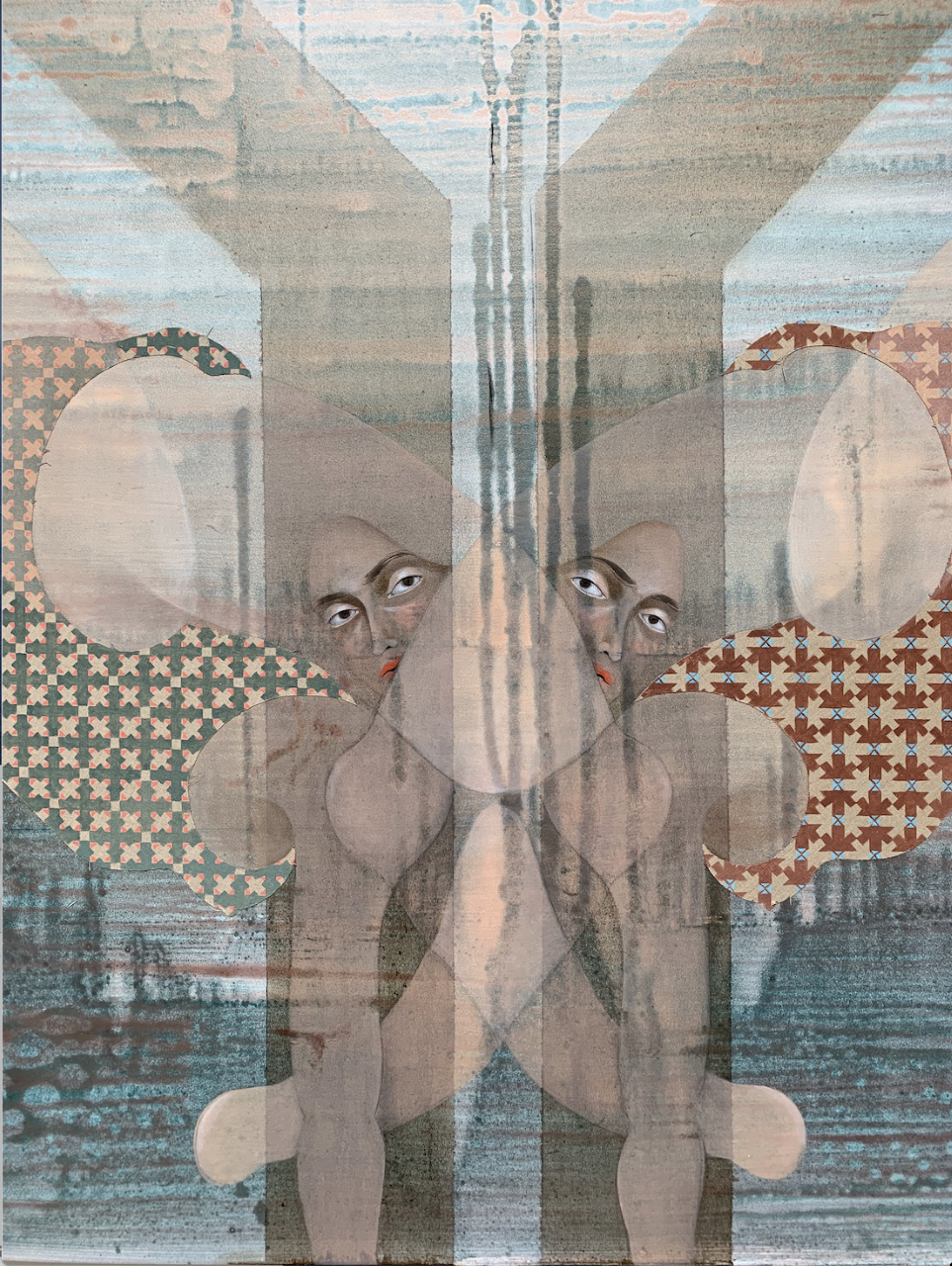
The language of a pandemic is complex and ever-evolving. From “social distancing” and “PPE” to “flattening the curve” and the “new normal”, there is a whole glossary of terms that have entered common parlance in order to verbalise the havoc that Covid-19 has wreaked across the world. As politicians, the media and the wider public attempt to grapple with this new vocabulary, it can be easy to forget that the way we talk about the virus—as a mysterious, foreign threat—often echoes the paranoid, nationalistic rhetoric that has gained so much traction in recent years.
It is exactly this concern that Hayv Kahraman addresses
in her latest Anti-Body series, created this year. Since the pandemic took hold, she has been considering the idea of immunity in biopolitical (as opposed to purely biological) terms. “Personally, I always revert back to my experience as a refugee or as a person of colour and how I’m treated as a foreigner,” she explains. “As a virus. To be expelled. Or to be tamed. To be colonised and ultimately to be eradicated.”
“Kahraman’s pictures offer a multilayered and multifaceted reading of biology and medical care”
While there is no doubt that a universal vaccine against Covid-19 is something we all hope for, Kahraman’s nuanced understanding of the ways in which language can be weaponised and shape public consciousness is powerful. In these new works, her ideas are manifested as contorted and twisted human bodies, fading under washes of colour that could allude to the pernicious, infectious droplets we are constantly warned about, the deep oppressive fog that has consumed many minds during lockdown and beyond, or indeed the dehumanising process by which scores of fatalities have been reduced to mere numbers. An overlaid geometric shape that mimics the physical “Y” structures of antibodies acts as a further reminder that the ways in which we combat and shield ourselves from harm are never simple.

Throughout this crisis, it has been difficult to give visual shape to the experience, not least because it has affected everyone differently on a local and global level. The constant search for information has led to news feeds, social media and government guidelines flooding our senses with instructional icons on how to keep safe, as well as disturbing imagery of overrun hospitals, police brutality and epic collective sorrow. The stark realities of this existence have often left little room for nuance or subtlety, because it is impossible to look beyond the immediate.
“Throughout this crisis, it has been difficult to give visual shape to the experience”
Yet Kahraman’s pictures offer a multilayered and multifaceted reading of biology
and medical care—and the ways they relate to our understanding of the physical body, the inner psyche and society at large. As she further explains, “You develop antibodies after you’re subjected to something foreign to deal with the disease. In a way they are also bridging the foreign and the self.” The artist rightfully interprets the concept of inoculation as the positive introduction of an outside element, in order for a body to survive. In this way, she looks beyond the fear of infection that so many of us have experienced, and turns instead to the power of symbiosis, which will ultimately reframe our existence.





